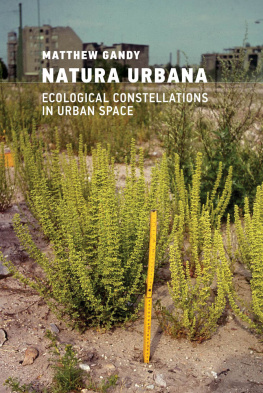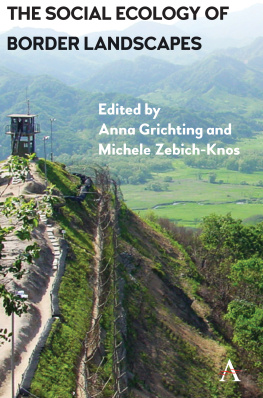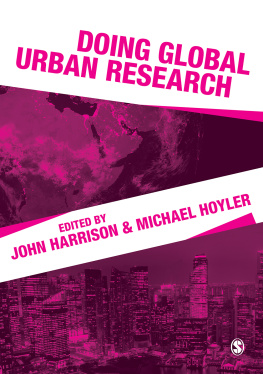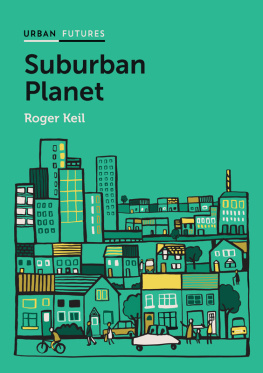
This edition first published 2016 2016 by John Wiley & Sons Ltd
Registered office: John Wiley & Sons, Ltd, The Atrium, Southern Gate, Chichester, West Sussex, PO19 8SQ, UK
Editorial offices: 9600 Garsington Road, Oxford, OX4 2DQ, UK
The Atrium, Southern Gate, Chichester, West Sussex, PO19 8SQ, UK
111 River Street, Hoboken, NJ 07030-5774, USA
For details of our global editorial offices, for customer services and for information about how to apply for permission to reuse the copyright material in this book please see our website at www.wiley.com/wiley-blackwell.
The right of the author to be identified as the author of this work has been asserted in accordance with the UK Copyright, Designs and Patents Act 1988.
All rights reserved. No part of this publication may be reproduced, stored in a retrieval system, or transmitted, in any form or by any means, electronic, mechanical, photocopying, recording or otherwise, except as permitted by the UK Copyright, Designs and Patents Act 1988, without the prior permission of the publisher.
Designations used by companies to distinguish their products are often claimed as trademarks. All brand names and product names used in this book are trade names, service marks, trademarks or registered trademarks of their respective owners. The publisher is not associated with any product or vendor mentioned in this book.
Limit of Liability/Disclaimer of Warranty: While the publisher and author(s) have used their best efforts in preparing this book, they make no representations or warranties with respect to the accuracy or completeness of the contents of this book and specifically disclaim any implied warranties of merchantability or fitness for a particular purpose. It is sold on the understanding that the publisher is not engaged in rendering professional services and neither the publisher nor the author shall be liable for damages arising herefrom. If professional advice or other expert assistance is required, the services of a competent professional should be sought.
Library of Congress Cataloging-in-Publication Data applied for
ISBN: 9781444332643 (Hardback)
ISBN: 9781444332650 (Paperback)
A catalogue record for this book is available from the British Library.
Wiley also publishes its books in a variety of electronic formats. Some content that appears in print may not be available in electronic books.
For Mick and Owen, my biggest supporters
and
In memory of Joanne Ainley, urban ecologist
Foreword
In the first quarter of the 21st century, we are living in a unique time in history we are witnessing the move to the Anthropocene, a geological period in which humans have become a major driver of planetary processes. This time has also been termed the Great Acceleration, a period of rapid increase in a large array of human activities with correspondingly large impacts on many environmental and biological processes. One of the clearest indicators of the changes underway is the emergence of the city as the main human habitat. For most of human history, the majority of the human population lived in rural or extensive landscapes, with only a few settlements that could be called cities. Rapid human-population increase and industrialization from the 1800s onwards has been paralleled by a dramatic increase in the number and size of cities and an ever-increasing proportion of the human population living in urban areas. For the first time in history, humans are predominantly an urban species.
Cities are therefore extremely important environments from a human perspective: they are where most people now live. They form the centres of economic and cultural activity and are as diverse as the economies and cultures that created them. Cities come in all shapes and sizes, some developing from early hubs of trade and navigation and some springing up in entirely new locations. Early cities tended to be compact and geared for travel by foot or horse. However, cheap cars and mass transit have released cities from their earlier spatial constraints and many now sprawl extensively in all directions. Planning and management of urban form and function have become increasingly important endeavours as cities evolve, grow and require more efficient and effective private buildings, public spaces and essential services.
Cities are not only home to humans, however. Most cities are mosaics of built infrastructure and open space parks, gardens, waterways and remnants of the nature that was present prior to the city's construction. These spaces are inhabited by a wide range of species, some of which thrive in the urban environment and some of which struggle. The mix of species present can include many species native to the region and many that have been introduced or have adapted themselves to the urban environment. Just as the city provides a focus for human creativity, it can also act as a place where new biologies play out new combinations of species, species doing new things, and species interacting in novel ways with humans and their built environment.
Given the increasing importance of the city environment and the richness and fascination of the biological systems that develop in cities, it might seem odd that the field of urban ecology has only blossomed quite recently. Indeed, a few decades ago, it would appear that cities were not regarded as places where ecologists would want to work seeking out instead the remote, apparently untouched areas where the ecology was intact. Today, cities are seen more as one end of a spectrum of humanized landscapes and are increasingly the subject of research into their ecological function. How do all the species found in cities persist and thrive? How do ecological communities develop within the altered environments found in cities? How does the urban ecosystem work with respect to flows of water, nutrients and energy? How do humans relate to, modify, and live in these environments? And, finally, are there better ways to plan and manage cities and their components that lead to greater liveability for humans and diverse biological communities alike?
This is the stuff of urban ecology, a growing field that seeks to understand how cities work in terms of their ecology and in relation to both their human and non-human inhabitants. This book is, a very timely contribution that provides an accessible yet fascinating synthesis of the ecology of urban environments. Within a strong framework of existing ecological theory, it explores how the construction and expansion of cities influence the characteristics of urban environments and the dynamics of populations, communities and ecosystems. It considers the ecology of human populations in cities, and presents a compelling case for conserving biodiversity and maintaining ecosystem services in urban landscapes. Overall, it seeks to help us better understand, plan and manage our primary habitat a task that gets more pressing and important by the minute, both for ourselves and for the other species with which we share our cities.
Richard J. Hobbs
University of Western Australia
Preface
A long time ago came a man on a track
Walking thirty miles with a sack on his back
And he put down his load where he thought it was the best
Made a home in the wilderness
He built a cabin and a winter store
And he ploughed up the ground by the cold lake shore
The other travellers came walking down the track
And they never went further, no, they never went back
Then came the churches, then came the schools
Then came the lawyers, then came the rules
Then came the trains and the trucks with their loads
Next page








